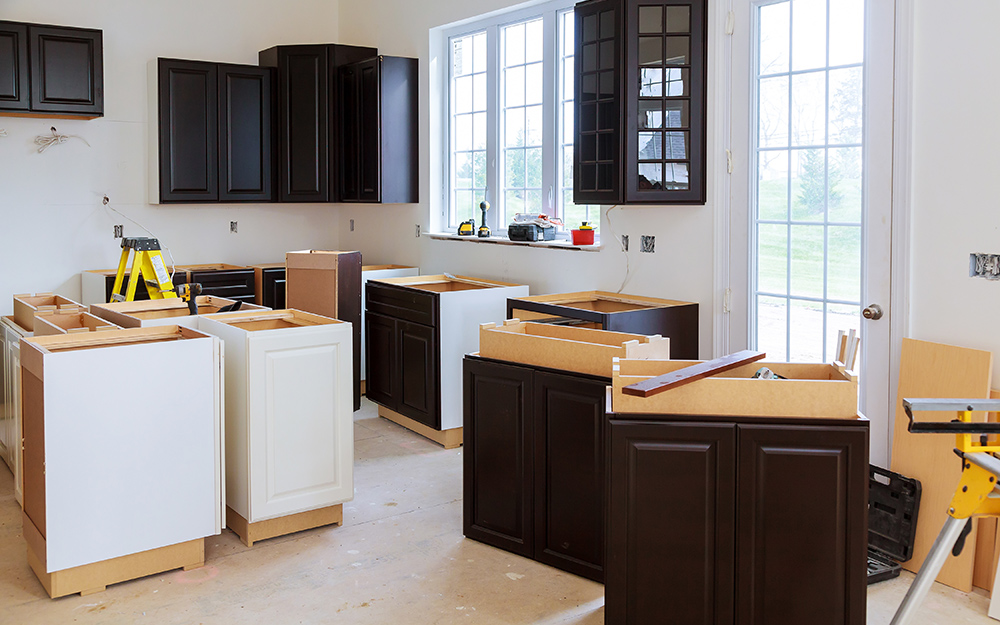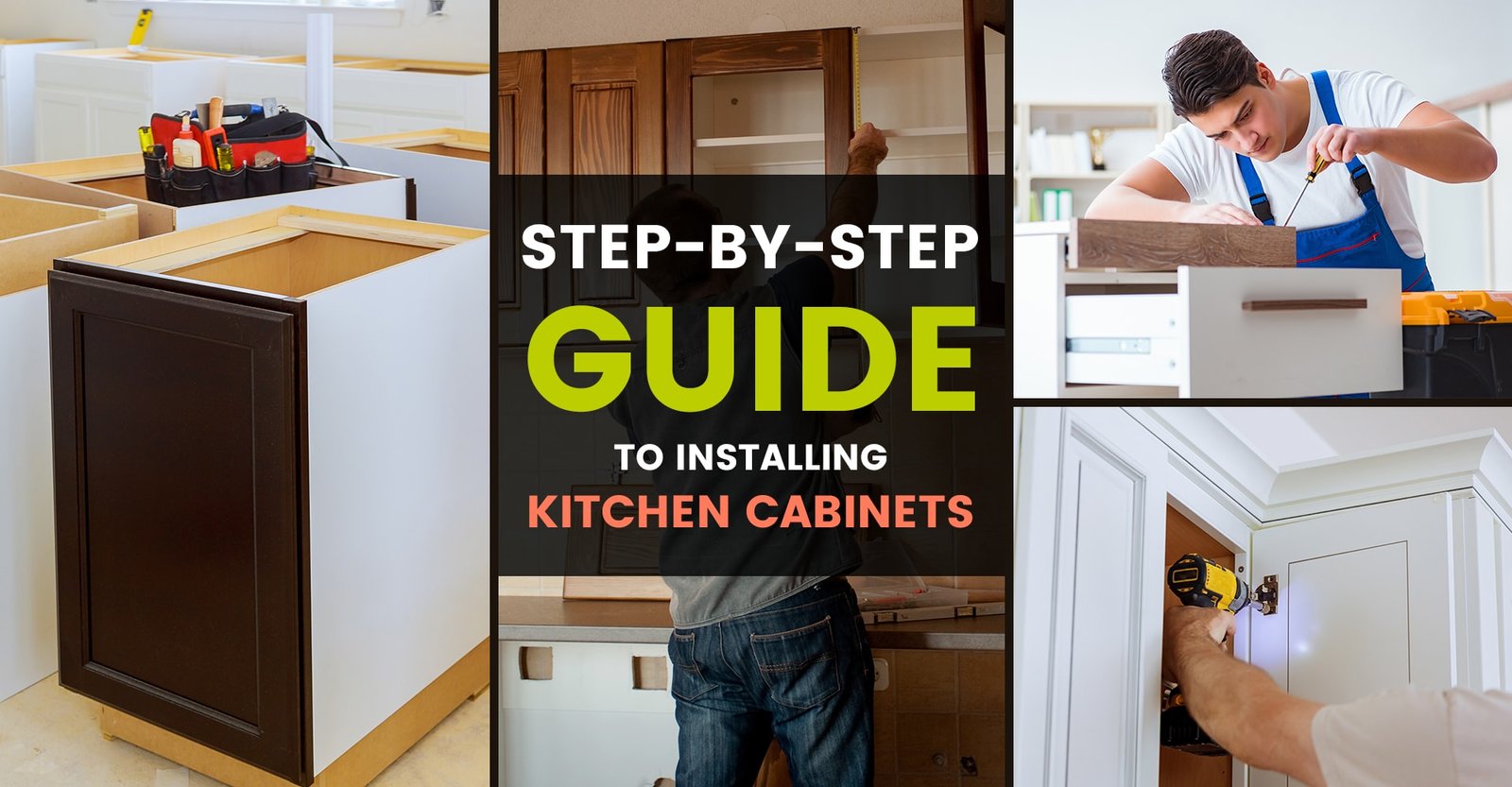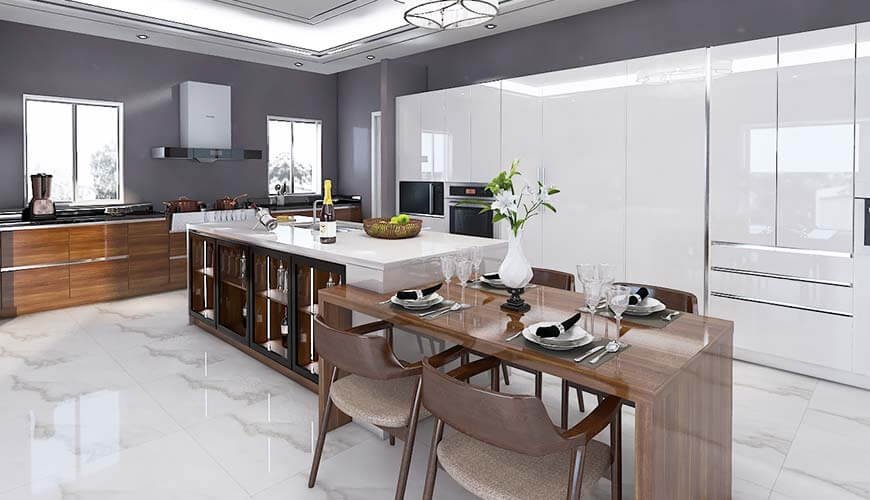The best way to install kitchen cabinets is to start with the upper cabinets before the base cabinets. Ensure the cabinets are level and securely anchored.
Installing kitchen cabinets can transform your kitchen space, making it both functional and stylish. Begin by planning the layout and measuring the space accurately. Use a stud finder to locate wall studs for secure mounting. Start with the upper cabinets to avoid working over the lower ones.
Ensure each cabinet is level before securing it with screws. Use shims if needed to adjust the height and alignment. After the upper cabinets are installed, proceed with the base cabinets. Check for level and plumb frequently. Properly installed kitchen cabinets enhance storage and add value to your home.
Table of Contents
TogglePreparation
Preparation is the key to a successful kitchen cabinet installation. Proper preparation will save you time and avoid mistakes. Let’s break down the preparation process into manageable steps.
Measuring Space
First, measure the space where the cabinets will go. Use a tape measure to get accurate dimensions. Write down the width, height, and depth of the space. Double-check your measurements to avoid errors.
Next, measure the walls and floors. Look for any uneven areas. Use a level to check if the surfaces are flat. If not, you may need to fix them before installing the cabinets.
Tip: Create a simple sketch of your kitchen layout. Mark all measurements on this sketch. This will help you visualize the space better.
Gathering Tools
Gather all the tools you will need for the installation. This will make the process smoother. Here’s a list of essential tools:
- Tape Measure
- Level
- Drill
- Screwdriver
- Stud Finder
- Pencil
- Clamps
Make sure your tools are in good working condition. Charge your drill batteries. Check if you have enough screws and other fasteners.
Tip: Place all your tools in a toolbox or a designated area. This will help you find them easily during the installation.
Having the right tools and accurate measurements will make your cabinet installation a breeze. Proper preparation ensures your cabinets fit perfectly and are securely installed.

Credit: www.familyhandyman.com
Choosing Cabinets
Choosing the right cabinets is essential for your kitchen’s look and functionality. The right choice can enhance your kitchen’s aesthetic appeal and make it more efficient. Let’s explore the key factors: Materials and Styles.
Materials
Cabinet materials significantly impact durability and appearance. Here are some popular options:
| Material | Features |
|---|---|
| Wood | Classic look, durable, various finishes. |
| Laminate | Cost-effective, easy to clean, many colors. |
| Thermofoil | Moisture-resistant, smooth finish, budget-friendly. |
| Metal | Modern look, high durability, easy maintenance. |
Styles
Choosing a cabinet style is crucial for your kitchen’s overall design. Here are some popular styles:
- Shaker: Simple and clean lines, versatile.
- Flat-Panel: Sleek and modern, minimalistic.
- Inset: Classic look, doors set inside the frame.
- Beadboard: Cottage style, detailed paneling.
- Glass-Front: Elegant, allows for display of items.
Consider the materials and styles that fit your kitchen theme. The right choice will make your kitchen both beautiful and practical.
Removing Old Cabinets
Before installing new kitchen cabinets, removing the old ones is crucial. This process requires careful planning and execution. Here, we will explore the best practices for safely and efficiently removing your old cabinets.
Safety Precautions
Safety should be your top priority. Follow these steps to ensure you stay safe:
- Turn off the power: Shut off electricity to the kitchen area.
- Wear protective gear: Use gloves, safety glasses, and a dust mask.
- Clear the area: Remove any items from the countertops and cabinets.
- Use the right tools: Gather a screwdriver, pry bar, and utility knife.
Disassembly Tips
Disassembling old cabinets can be tricky. Follow these tips for a smooth process:
- Remove cabinet doors: Unscrew the hinges and take off the doors.
- Detach shelves: Slide out or unscrew any adjustable shelves.
- Take off hardware: Remove handles, knobs, and drawer pulls.
- Cut through caulk: Use a utility knife to cut caulk seals around the cabinets.
- Unscrew from the wall: Locate and remove screws that attach cabinets to the wall.
- Use a pry bar: Gently pry the cabinets away from the wall.
Following these steps will make removing old cabinets easier and safer. Proper preparation ensures a smooth transition to installing new kitchen cabinets.
Wall Preparation
Preparing your walls is crucial before installing kitchen cabinets. Proper wall preparation ensures your cabinets are secure and level. Follow these steps to make your installation smooth and efficient.
Cleaning Walls
First, clean your walls thoroughly. Remove any dust, grease, or grime. Use a mild detergent and warm water. Rinse well and let the walls dry completely. Clean walls ensure better adhesion and a stronger hold.
Marking Studs
Next, locate and mark the wall studs. Use a stud finder to identify stud locations. Mark each stud with a pencil or masking tape. Studs provide the necessary support for heavy cabinets.
Here’s a quick step-by-step guide to marking studs:
- Turn on the stud finder and calibrate it against the wall.
- Slowly move the stud finder horizontally across the wall.
- Mark the edges of each stud with a pencil.
- Measure the distance between studs to ensure accuracy.
With clean walls and marked studs, you are ready to install your kitchen cabinets. These steps ensure a solid foundation and a successful installation.
Installing Upper Cabinets
Installing upper cabinets can transform your kitchen. They provide extra storage and enhance the kitchen’s look. Follow these steps to ensure a smooth installation.
Mounting Rails
Mounting rails are essential for securing upper cabinets. They help distribute the cabinet’s weight evenly. Follow these steps to install mounting rails:
- Measure the Wall: Use a measuring tape to mark the height for the rails. Ensure the marks are level using a spirit level.
- Locate Studs: Use a stud finder to locate wall studs. Mark the stud positions with a pencil.
- Attach Rails: Align the mounting rails with the stud marks. Secure the rails using screws.
Securing Cabinets
Securing cabinets is the next step after mounting rails. Properly securing them ensures safety and durability. Follow these steps to secure your cabinets:
- Prepare Cabinets: Remove cabinet doors and shelves for easier handling.
- Lift Cabinets: With a helper, lift the cabinet onto the mounting rails. Ensure the cabinet aligns with the rails.
- Secure Cabinets: Use screws to attach the cabinet to the wall studs. Start from the top and work your way down.
- Check Alignment: Use a spirit level to check the cabinet’s alignment. Adjust if necessary before fully tightening the screws.
Following these steps ensures your upper cabinets are installed securely and efficiently. Enjoy your new kitchen storage and look!

Credit: www.superiorstoneandcabinet.com
Installing Base Cabinets
Installing base cabinets is a crucial step in a kitchen renovation. Properly installed base cabinets ensure a sturdy and level foundation for your countertops. This guide will walk you through the essential steps, including leveling cabinets and attaching to walls.
Leveling Cabinets
Start by marking a level line on the wall. This line will guide the top of your base cabinets. Use a laser level or a spirit level for accuracy.
Place the first cabinet in position. Check the cabinet’s level from side to side and front to back. Use shims under the cabinet to make adjustments. Repeat this process for each additional cabinet.
| Tool | Purpose |
|---|---|
| Laser Level | Ensures a straight line |
| Spirit Level | Checks cabinet level |
| Shims | Adjusts cabinet height |
Attaching To Walls
Once the cabinets are level, secure them to the wall. Use 2.5-inch screws for attaching cabinets to wall studs. Pre-drill holes in the cabinet’s back panel to prevent splitting.
Align the first cabinet with the level line. Drive screws through the holes into the wall studs. Ensure the cabinet remains level as you tighten the screws.
- Mark stud locations on the wall.
- Pre-drill holes in the cabinet’s back panel.
- Align the cabinet with the level line.
- Secure the cabinet to the wall studs.
Repeat these steps for each cabinet. Check the level of each cabinet before securing it to the wall. Use clamps to hold cabinets together while securing them.
Finishing Touches
The final step in installing kitchen cabinets involves the finishing touches. This step ensures your cabinets look polished and complete. These touches include adding trim and installing hardware. They enhance the cabinets’ functionality and aesthetics.
Adding Trim
Adding trim to your kitchen cabinets can make a big difference. Trim can hide gaps and give a professional look. You can choose from various trim types such as crown molding, light rail molding, or base trim.
- Crown Molding: This trim goes on top of the cabinets. It adds height and elegance.
- Light Rail Molding: This trim is placed under the cabinets. It hides under-cabinet lights and wires.
- Base Trim: This trim covers the base of the cabinets. It hides any gaps between the cabinets and the floor.
Installing Hardware
Installing hardware like knobs and handles is the final step. It gives your cabinets a complete look. Plus, it makes them easier to use.
- Choose Your Hardware: Select knobs and handles that match your kitchen style.
- Measure and Mark: Use a template to mark where each piece of hardware will go. This ensures uniform placement.
- Drill Holes: Use a drill to make holes at the marked spots.
- Attach Hardware: Screw the knobs and handles into place.
Ensure that each piece of hardware is securely fastened. Double-check that all handles and knobs are level and aligned.

Credit: www.homedepot.com
Common Mistakes
Installing kitchen cabinets can be tricky. Many people make common mistakes. These errors can cause gaps, instability, and other issues. By avoiding these mistakes, you can install your cabinets correctly.
Avoiding Gaps
Gaps between cabinets look bad. They can also collect dust and debris. To avoid gaps, follow these steps:
- Use a level to align cabinets.
- Measure twice before drilling.
- Install shims to fill small gaps.
Using a level is very important. It helps keep your cabinets straight. Measure twice to ensure proper alignment. Shims are small pieces of wood. They help fill small gaps and keep cabinets tight.
Ensuring Stability
Stability is key for kitchen cabinets. Unstable cabinets can fall. To ensure stability, consider these tips:
- Use strong wall anchors.
- Screw into wall studs.
- Check cabinet brackets.
Wall anchors help secure cabinets to the wall. Wall studs provide a strong base. Cabinet brackets should be tight and secure. This ensures your cabinets won’t move or fall.
Here’s a table for tools needed:
| Tool | Purpose |
|---|---|
| Level | Align cabinets |
| Drill | Make holes |
| Shims | Fill gaps |
| Wall Anchors | Secure cabinets |
Using the right tools makes the job easier. Follow these tips to avoid common mistakes. Your kitchen cabinets will look great and stay secure.
Frequently Asked Questions
What Tools Are Needed To Install Kitchen Cabinets?
You will need a drill, screws, level, tape measure, and clamps.
How Long Does Cabinet Installation Take?
It typically takes 1-3 days, depending on the kitchen size.
Can I Install Kitchen Cabinets Myself?
Yes, with the right tools and instructions, DIY installation is possible.
What Is The Cost To Install Kitchen Cabinets?
Costs vary widely but generally range from $2,000 to $8,000.
How Do I Prepare My Kitchen For Cabinet Installation?
Clear the area, remove old cabinets, and ensure walls are level.
Should Cabinets Be Installed On The Floor Or Walls First?
Install wall cabinets first to avoid damaging base cabinets.
Do I Need To Hire A Professional Installer?
Hiring a professional ensures proper installation and can save time.
What Materials Are Best For Kitchen Cabinets?
Popular materials include plywood, MDF, and solid wood.
How Do I Ensure Cabinets Are Level?
Use a level and shims to adjust and secure cabinets.
What Are Common Mistakes In Cabinet Installation?
Common mistakes include improper leveling, incorrect measurements, and inadequate support.
Conclusion
Installing kitchen cabinets can be straightforward with the right tools and steps. Follow the guidelines for a successful installation. Ensure precision and take your time to achieve a professional look. Remember, well-installed cabinets enhance your kitchen’s functionality and appeal. Happy renovating!


